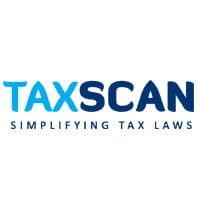Inability to Produce parties of Bogus Purchases and Requesting AO for Additions to Returned Income: ITAT restricted Addition from 12.5% to 6% [Read Order]
![Inability to Produce parties of Bogus Purchases and Requesting AO for Additions to Returned Income: ITAT restricted Addition from 12.5% to 6% [Read Order] Inability to Produce parties of Bogus Purchases and Requesting AO for Additions to Returned Income: ITAT restricted Addition from 12.5% to 6% [Read Order]](https://www.taxscan.in/wp-content/uploads/2023/10/Inability-Produce-parties-of-Bogus-Purchases-Requesting-Returned-Income-ITAT-restricted-TAXSCAN.jpg)
The Mumbai bench of the Income Tax Appellate Tribunal (ITAT) restricted the addition from 12.5% to 6% due to the inability to produce the parties of bogus purchases and requests made to the Assessing Officer for additions to the returned income.
The Assessing Officer observed that the assessee made a total purchase of Rs. 88,32,789/- and has submitted the list of purchase parties, sale parties, sundry creditors, and debtors, therefore, in order to verify the genuineness of the purchases made, the Assessing Officer issued the notices under Section 133(6) of the Income Tax Act, 1961 to the supplier parties however, the notices were returned back by the postal authority with the remarks ‘not known’.
The Assessee was asked to produce the said parties along with relevant details, which the Assessee failed to produce, however, the Assessee’s representative while submitting a copy of the acknowledgment for the last 2 years and details of GP & NP ratio, requested the Assessing Officer to consider the gross profit rate as determined and make the additions to the returned income.
The Assessing Officer made the addition of Rs. 7,71,833/- being 12.99% of total purchases of Rs. 59,41,753/- and added the same in the income of the Assessee. The Commissioner of Income Tax (Appeal) [CIT(A)] on appeal restricted the addition to 12.5% instead of 12.99% of the unproved/non-genuine purchases.
The Single-member bench comprising of N.K. Choudhry (Judicial member) held that the assessee before the Assessing Officer has admitted his inability to produce the parties from whom the alleged purchases have been made and shown and requested the Assessing Officer to consider the gross profit as determined and make additions to the returned income.
In the cases relied upon by the Assessee, the Co-ordinate Benches of the Tribunal restricted the addition qua bogus purchases at 6 to 7 % of the sales, hence, considering the peculiar facts and circumstances, the bench deemed it appropriate to direct the Assessing Officer to restrict the addition being profit embodied, from 12.5% to 6% of the alleged purchases made. Consequently, the addition is confirmed only to the extent of 6% of the purchases made.
However, if the alleged purchases and profit embedded therein have already shown and offered to tax at a higher rate, as claimed by the assessee, and has been considered by the Assessing Officer, then the addition shall be restricted to the amount already offered to tax by the assessee and the assessee shall not be entitled to any refund. Thus, the appeal of the assessee was partly allowed.
To Read the full text of the Order CLICK HERE
Support our journalism by subscribing to Taxscan premium. Follow us on Telegram for quick updates
Kailash Judhistir Sahu vs CIT(A) �38 , 2023 TAXSCAN (ITAT) 2459 , Shri Ashwin Chhag , Shri Anurag Tripathi, Ld. Sr. DR

